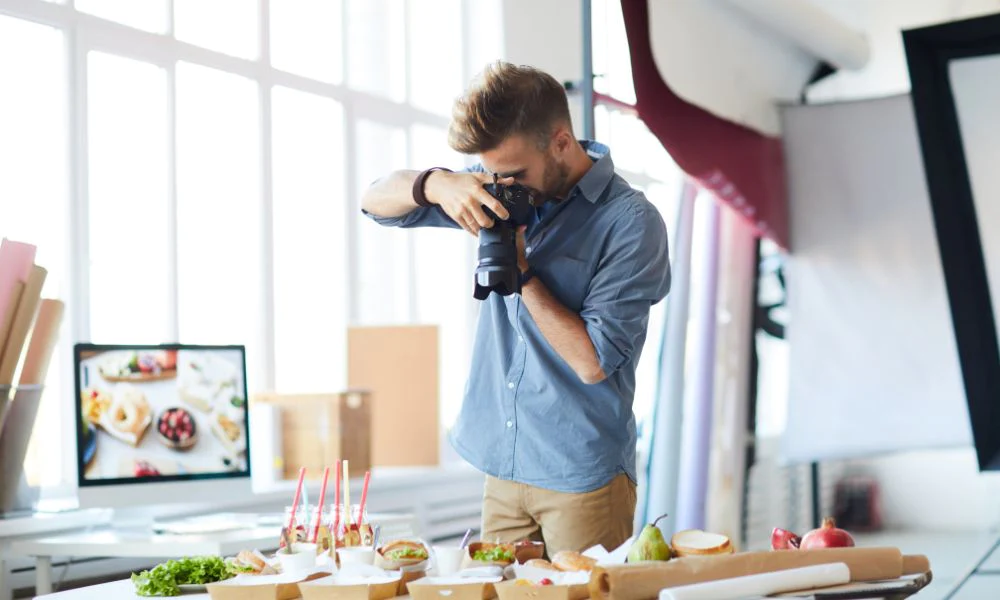Zoom in on textures, from crispy crusts to velvety sauces, and explore close-up photography techniques that showcase the intricate details of your dishes.
Table of Contents
A Palette of Textures: Exploring Close-Up Food Photography Techniques
Close-up food photography is a great way to capture the beauty and detail of food. It can also be a lot of fun to experiment with different textures and compositions. In this article, we will explore some tips and techniques for taking close-up food photos that highlight texture.
Choose the right subject. Not all food is created equal when it comes to close-up photography. Some foods, such as fruits, vegetables, and meats with marbling, have natural textures that lend themselves well to this type of photography. Other foods, such as soups, stews, and sauces, may be more challenging to capture in a visually appealing way.
Use a shallow depth of field. A shallow depth of field will blur the background of your photo, making your subject stand out. To achieve a shallow depth of field, use a wide aperture (f/2.8 or lower) and move closer to your subject.
Experiment with different angles. Don’t be afraid to get creative with your angles. Try shooting from above, below, or the side to get a different perspective. You can also use props to create interesting compositions.
Use natural light. Lighting is a crucial aspect when it comes to showcasing textures in food photography. Soft, diffused lighting is often preferred as it helps to reveal the intricate details without harsh shadows or reflections. Natural light is ideal for capturing textures as it brings out the true colors and enhances the depth of the subject. Window light or shooting outdoors during the golden hour can provide beautiful soft light that accentuates the textures in a dish.
Edit your photos. Once you have taken your photos, you can use editing software to enhance the colors and textures. Be careful not to overdo it, though. You want your photos to look natural and appealing.
Textures play a vital role. Textures play a vital role in food photography as they add depth and interest to an image. Capturing the intricate details of a dish can make it more visually appealing and evoke a sensory experience for the viewer. In this article, we will delve into various close-up food photography techniques that focus on highlighting textures to create stunning visuals.
Here are some specific tips for capturing different types of textures in food photos:
- Crispy: To capture crispy textures, such as the crust of a pizza or the skin of a roasted chicken, use a shallow depth of field and focus on the sharp edges of the food. You can also use a high shutter speed to freeze any motion and prevent blur.
- Soft: To capture soft textures, such as the inside of a cake or the flesh of a ripe strawberry, use a shallow depth of field and focus on the soft, delicate areas of the food. You can also use a lower shutter speed to create a sense of movement or blur.
- Smooth: To capture smooth textures, such as the surface of a chocolate mousse or the icing on a cake, use a shallow depth of field and focus on the reflective areas of the food. You can also use a softbox or other diffuser to soften the light and prevent harsh shadows.
- Rough: To capture rough textures, such as the bark of a tree or the skin of a grapefruit, use a shallow depth of field and focus on the uneven surfaces of the food. You can also use a hard light source to create dramatic shadows.
With a little practice, you can learn to capture all sorts of textures in your close-up food photography. So get out there and start experimenting!
Additional tips
Here are some additional tips for taking close-up food photos:
- Use a tripod. A tripod will help you keep your camera steady, especially when shooting at low shutter speeds.
- Use a macro lens. A macro lens will allow you to get extremely close to your subject and capture all the tiny details.
- Compose your shot carefully. Think about what you want to include in your photo and how you want to arrange the elements.
- Pay attention to the background. Choose a background that will complement your subject and not distract from it.
- Be patient. It may take some time to get the perfect shot. Don’t be afraid to experiment and try different things.
With these tips in mind, you can start taking close-up food photos that will capture the beauty and texture of your favorite foods.
Conclusion
In conclusion, exploring textures in close-up food photography can take your images to a whole new level. By paying attention to lighting, background, props, styling techniques, and post-processing, photographers can create visually stunning photographs that not only make viewers hungry but also engage their senses. So grab your camera, experiment with different techniques, and let the textures of food become your artistic palette.

